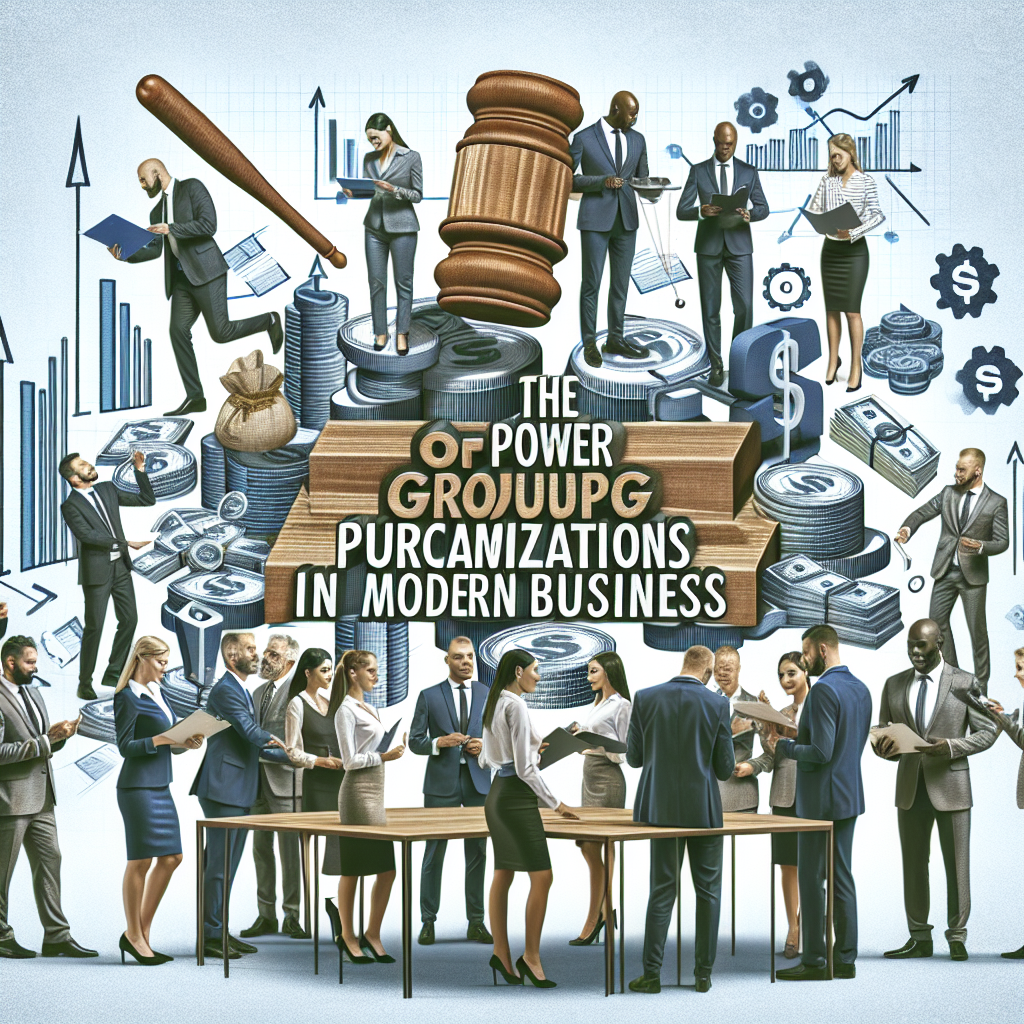Introduction
The COVID-19 pandemic has had a significant impact on global supply chains, revealing weaknesses and inefficiencies in various industries. Disruptions in manufacturing, transportation, and logistics resulted in widespread delays and shortages.
Learning from these challenges is crucial for creating more resilient supply chains. Businesses must adapt to not just survive but also thrive in an unpredictable environment. Key strategies include:
- Embracing flexibility
- Diversifying sourcing strategies
- Leveraging technology
In this article, we will explore the key lessons learned from COVID-19 and discuss actionable steps you can take to future-proof your supply chains against future shocks. Understanding these lessons equips you with the knowledge to navigate uncertainties effectively.
1. Embracing Flexibility and Resilience
Flexible supply chains are characterized by their ability to quickly adapt to changing circumstances and disruptions. This adaptability is essential in today’s unpredictable environment, where unforeseen events can arise at any moment. By integrating flexibility into their operations, businesses can respond effectively to challenges, minimizing delays and maintaining service continuity.
Resilience complements flexibility. It involves building systems and processes that withstand shocks, such as natural disasters or pandemics. A resilient supply network not only recovers more quickly from disruptions but also reduces the overall impact on operations and customer satisfaction. Key strategies for enhancing resilience include:
- Diversified suppliers: Relying on multiple suppliers ensures alternatives are available when one source fails. This strategy is crucial for building resilience during tough times.
- Inventory management: Maintaining safety stock levels can buffer against sudden demand spikes or supply shortages.
- Scalable logistics: Utilizing adaptable transportation solutions allows for rapid shifts in distribution methods when necessary.
Real-world examples illustrate these concepts in action during COVID-19. Companies like Unilever pivoted their supply chains to produce hand sanitizers in response to increased demand, showcasing flexibility. Similarly, Coca-Cola adapted its distribution strategy by shifting focus from restaurants and events to retail platforms, ensuring continued access to products.
These instances highlight the importance of embracing both flexibility and resilience in supply chain management. By prioritizing these attributes, organizations can better navigate disruptions while maintaining operational effectiveness and customer trust.
Moreover, the adoption of frugal living principles can further enhance resilience by maximizing cost savings during challenging times. It’s also essential to understand the role of Diversity, Equity, and Inclusion (DEI) in procurement processes, as this understanding can significantly improve communication regarding procurement’s value – a topic explored in our article on procurement terms to avoid.
Finally, staying abreast of the latest trends in supplier innovation is critical for maintaining a competitive edge in the market; insights into this can be gained from our piece on top trends in supplier innovation.
2. Diversifying Sourcing Strategies for Risk Mitigation
Adopting multi-sourcing strategies has become essential for businesses aiming to minimize risks associated with supply chain disruptions. By reducing dependency on a single supplier or region, companies can enhance their resilience against unforeseen events. Multi-sourcing enables organizations to:
- Spread Risk: Relying on multiple suppliers mitigates the impact of a disruption at one source, ensuring continuity in operations.
- Enhance Negotiation Power: With several suppliers in the mix, businesses can leverage competition to secure better pricing and terms.
Moreover, investing in supplier diversity and multi-sourcing strategies not only strengthens your supply chain but also fosters innovation and competitiveness in a rapidly changing global landscape.
Geographical diversification is another critical aspect of risk mitigation. Companies that spread their sourcing across different regions are better positioned to weather localized disruptions caused by natural disasters, geopolitical tensions, or health crises. Key benefits include:
- Reduced Vulnerability: Geographic diversity allows businesses to shift production or sourcing quickly when disruptions occur in one location.
- Access to Diverse Markets: Different regions may offer unique advantages, such as lower labor costs or specialized skills.
Emerging sourcing regions that should be explored include:
- Mexico: Proximity to the U.S. market reduces shipping times and costs while maintaining access to skilled labor.
- Malaysia: Known for its robust manufacturing sector, Malaysia offers competitive pricing and an established supply chain ecosystem.
- Vietnam: Rapidly becoming a major player in electronics and textiles, Vietnam provides opportunities for companies looking to diversify away from China.
In this context, adopting effective sourcing strategies not only helps in risk management but also aids in hiring top talent. Furthermore, understanding the difference between strategic sourcing and category management can provide valuable insights for procurement optimization. The use of advanced procurement software can also revolutionize your procurement strategy, making it more efficient and effective.
3. Leveraging Technology for Enhanced Supply Chain Efficiency
Technology investment became a cornerstone for organizations navigating the challenges of COVID-19. Companies quickly recognized that digital tools were essential for maintaining operations during unprecedented disruptions.
Key areas where technology made an impact include:
-
Advanced Analytics: Utilizing sophisticated analytics allows businesses to enhance demand forecasting accuracy. Organizations can analyze historical data alongside real-time market trends, enabling them to make informed decisions promptly. This shift minimizes stockouts and overstock situations, optimizing inventory management.
-
Automation Solutions: The adoption of robotics and AI-driven systems gained momentum as businesses sought increased operational efficiency. Automation streamlines repetitive tasks, allowing human resources to focus on strategic initiatives. For example, robotic process automation (RPA) has improved order processing times and reduced errors in fulfillment operations.
-
Real-Time Visibility Tools: Implementing software solutions that provide end-to-end visibility into supply chain operations is vital. These tools allow companies to track shipments, monitor supplier performance, and manage logistics more effectively. Real-time insights facilitate rapid responses to disruptions, ensuring continuity even amid uncertainty.
Moreover, leveraging drastic cost reduction through collective spend can significantly enhance supply chain efficiency. This approach not only optimizes procurement processes but also maximizes the value derived from every dollar spent.
As you evaluate your own supply chain approach, consider how these innovations can drive efficiency and adaptability in your operations. If you’re looking to kickstart your career in this field, exploring entry-level procurement jobs could be a beneficial step.
For those managing smaller teams or even a one-person procurement function, these tips for managing a one-person procurement function could prove invaluable. They focus on optimizing cost efficiency and supplier management which are critical in such scenarios.
Additionally, understanding the nuances of purchasing groups versus group purchasing organizations can provide insights into strategic sourcing decisions that further streamline supply chain operations.
Finally, unlocking exclusive membership benefits through strategic alliances can offer additional resources and support in navigating the complexities of supply chain management.
4. Ensuring Supply Chain Visibility Through Data Integration
Achieving end-to-end visibility across the entire supply chain ecosystem is crucial, especially in the wake of COVID-19. Enhanced visibility allows organizations to monitor their supply chains in real time, identify potential disruptions early, and respond quickly to changes in demand or supply conditions.
Significance of Visibility
- Transparency within the supply chain fosters improved decision-making. When you have access to accurate data from suppliers and manufacturers, you can anticipate issues and streamline operations.
- Visibility reduces risks associated with unexpected events, allowing businesses to adapt swiftly and minimize losses.
Strategies for Greater Transparency
Implementing effective strategies is essential in enhancing supply chain transparency:
-
Regular Communication: Establish open lines of communication with suppliers. Regular updates on inventory levels and production schedules help maintain clarity regarding supply status. This transparent supplier communication not only builds trust but also drives business growth.
-
Information Sharing Protocols: Create structured protocols that facilitate data sharing among all stakeholders. This could include:
- Utilizing cloud-based platforms for real-time data access.
- Leveraging collaborative tools that allow for seamless information flow between parties.
-
Data Integration Technologies: Invest in technologies that integrate data across various systems. Solutions such as ERP (Enterprise Resource Planning) systems can centralize information, making it easily accessible and actionable.
By prioritizing visibility through these strategies, businesses can build a more resilient supply chain capable of withstanding future disruptions while fostering stronger relationships with partners. For further assistance in implementing these strategies or for any inquiries, feel free to contact us.
5. Proactive Risk Management Strategies for Future Resilience
The COVID-19 pandemic highlighted the need for strong risk management frameworks that go beyond traditional methods. Businesses faced unprecedented challenges, exposing weaknesses in existing supply chain strategies. To navigate future disruptions, it is crucial to establish a proactive risk management system.
Key Components of Proactive Risk Management
1. Predictive Analytics Tools
Using advanced analytics allows organizations to identify potential disruptions before they worsen. These tools examine past data and recognize patterns to effectively predict risks.
2. Contingency Planning
Creating thorough contingency plans ensures that businesses are ready for different situations. This includes:
- Assessing risks throughout the supply chain
- Developing response strategies specific to certain disruptions
- Regularly updating plans based on changing circumstances
Strategic Approaches to Enhance Resilience
- Tail Spend Management: Understanding and controlling tail spend, which refers to low-value spending that is often ignored, is a crucial part of risk management. By implementing effective tail spend management strategies, organizations can streamline their procurement processes and reduce unnecessary expenses.
- Supplier Relationship Management: Building strong relationships with suppliers is another important aspect. Implementing robust supplier relationship management practices allows businesses to collaborate with suppliers for joint risk assessment and develop response strategies tailored to specific disruptions.
Benefits of Proactive Strategies
Implementing proactive risk management not only reduces losses but also improves overall resilience. Organizations can:
- Anticipate changes in demand or supply constraints
- Quickly adapt operations to maintain productivity
- Foster collaboration with suppliers for joint risk assessment
These practices enable companies to pivot efficiently during uncertain times, ensuring continuity and stability. As businesses recover from the pandemic, it will be essential to integrate these proactive measures into their supply chain strategies in order to withstand future shocks.
6. Rethinking Business Models: From Just-in-Time to Resilience-Oriented Approaches
The COVID-19 pandemic exposed significant vulnerabilities in existing operational models, particularly those relying heavily on just-in-time (JIT) manufacturing. This approach, which minimizes inventory and relies on precise timing for deliveries, became a liability as supply chain disruptions unfolded worldwide.
Key shifts in operational models include:
- Emphasis on Resilience: Businesses are recognizing the need to integrate resilience into their supply chain strategies. This involves creating buffer stocks and diversifying suppliers to mitigate risks associated with sudden disruptions.
- Balancing Efficiency and Reliability: While JIT has traditionally been favored for its cost-effectiveness, a balance must now be struck between efficiency and reliability. Organizations are reassessing their priorities, often opting for more robust inventories that can withstand unexpected shocks.
Long-term implications of this paradigm shift are evident:
- Strategic Reorientation: Companies are investing in adaptive strategies that enable rapid response to changing conditions. This may involve reconfiguring logistics networks or adopting flexible manufacturing systems.
- Cultural Changes: A shift towards resilience-oriented approaches necessitates changes in corporate culture. Teams must become more agile, capable of making swift decisions in response to evolving challenges.
- Technology Integration: Advanced technologies play a crucial role in enabling this transition. Automation and data analytics can enhance visibility, allowing businesses to anticipate disruptions and adjust operations accordingly.
Moreover, organizations must also learn how to succeed with limited resources during these challenging times. Implementing some of the 10 essential business tips can help businesses thrive despite constraints by optimizing processes and leveraging networks effectively.
Adopting resilience-oriented approaches will define how organizations navigate future uncertainties, transforming supply chain strategies for enhanced sustainability and performance.
7. Navigating Geopolitical Factors Influencing Supply Chains
Geopolitical factors significantly impact supply chains, often leading to vulnerabilities that require strategic adaptations. Events such as trade wars or natural disasters can disrupt global networks, causing delays and increased costs. Businesses must understand these dynamics to develop robust responses.
Key Geopolitical Influences
- Trade Wars: Tariffs and import/export restrictions can limit access to essential materials. Companies reliant on specific regions may face steep price increases or supply shortages.
- Natural Disasters: Earthquakes, floods, or other calamities can halt production in affected areas. Such disruptions highlight the fragility of tightly integrated supply chains.
Building Geopolitical Resilience
Consider the following strategies for enhancing resilience:
- Supplier Diversification: Engaging multiple suppliers across different regions helps mitigate risks associated with localized disruptions.
- Flexible Logistics Solutions: Implementing adaptable transportation methods increases responsiveness during geopolitical crises.
- Risk Assessment Protocols: Regularly analyzing geopolitical landscapes allows businesses to anticipate potential challenges and prepare contingency plans.
Moreover, mastering procurement through continuous learning and adaptation is crucial in these times. By embracing a mindset of lifelong learning and strategic thinking, companies can navigate through complexities and ensure continuity in their operations.
Investing in these strategies not only fortifies supply chains against current geopolitical uncertainties but also prepares organizations for future challenges that may arise from evolving global dynamics. By prioritizing resilience in their supply chain designs, companies can effectively manage the intricacies of geopolitical influences.
8. Fostering Collaborative Partnerships for Mutual Resilience
The COVID-19 pandemic reshaped the dynamics between supply chain partners. As businesses faced unprecedented challenges, the importance of collaboration became evident. Companies that cultivated strong relationships with their suppliers and logistics providers were better equipped to navigate disruptions.
Key aspects of fostering collaboration include:
- Open Communication: Transparent dialogue enables all parties to share critical information about demand fluctuations, inventory levels, and logistical hurdles.
- Joint Problem-Solving: Collaborating on solutions can lead to innovative approaches that may not have been considered in isolation. For instance, a supplier and manufacturer working together can develop contingency plans that enhance responsiveness.
- Shared Resources: Pooling resources among partners can optimize supply chain operations. This could mean sharing warehousing space or transportation assets to reduce costs and improve efficiency.
- Trust Building: Establishing trust is fundamental in any partnership. Businesses that prioritize reliability and integrity in their dealings create a solid foundation for mutual support during crises.
Real-world examples illustrate this evolution. Companies like Procter & Gamble reported enhanced collaboration with suppliers, resulting in improved product availability during peak demand periods. Similarly, organizations leveraging Group Purchasing Organizations (GPOs) experienced collective bargaining power, enabling them to obtain necessary supplies at competitive rates.
By prioritizing collaborative partnerships, businesses not only fortify their supply chains against future shocks but also contribute to a resilient ecosystem where all parties thrive.
Conclusion: Future-Proofing Supply Chains Beyond COVID-19
The COVID-19 supply chain lessons have highlighted the importance of being resilient and adaptable in today’s ever-changing world. Businesses need to focus on strategies for after the pandemic that incorporate the lessons learned during this difficult time. Here are some key actions to think about:
- Implementing flexible sourcing to manage risks effectively.
- Leveraging technology for improved visibility and efficiency.
- Cultivating collaborative partnerships to strengthen mutual resilience.
In line with the need for flexible sourcing, it’s worth noting the future trends in procurement engineer salaries, which reflect the increasing demand for expertise in this area.
A comprehensive approach that addresses all these lessons will empower organizations to create strong and sustainable supply chains. This proactive mindset is crucial for dealing with future disruptions and new challenges. By prioritizing these strategies, companies can ensure they are not just ready but also thriving in a world after COVID. Embrace change, invest in resilience, and secure your supply chains for the future starting now.
FAQs (Frequently Asked Questions)
What are the key lessons learned from COVID-19 regarding supply chains?
The key lessons learned from COVID-19 include the importance of flexibility and resilience in supply chains, diversifying sourcing strategies to mitigate risks, leveraging technology for enhanced efficiency, ensuring visibility through data integration, proactive risk management strategies, rethinking business models towards resilience, navigating geopolitical factors, and fostering collaborative partnerships.
How can businesses embrace flexibility and resilience in their supply chains?
Businesses can embrace flexibility and resilience by adopting flexible supply chain strategies that allow for quick adaptations to disruptions. This includes diversifying suppliers, investing in technology for real-time visibility, and developing contingency plans to minimize the impact of unforeseen events such as pandemics or natural disasters.
Why is diversifying sourcing strategies important for risk mitigation?
Diversifying sourcing strategies is crucial for risk mitigation as it reduces dependency on a single supplier or region. By geographically diversifying suppliers, businesses can better manage localized disruptions and enhance their overall resilience. Emerging sourcing regions like Mexico, Malaysia, and Vietnam should be explored for greater stability.
What role does technology play in enhancing supply chain efficiency?
Technology plays a pivotal role in enhancing supply chain efficiency by enabling organizations to navigate challenges effectively. Investments in advanced analytics facilitate accurate demand forecasting and real-time visibility into operations. Furthermore, automation solutions such as robotics and AI-driven systems improve operational agility and efficiency.
How can companies ensure supply chain visibility post-pandemic?
To ensure supply chain visibility post-pandemic, companies must achieve end-to-end transparency across their ecosystem. This involves regular communication with suppliers and manufacturers, implementing information-sharing protocols, and utilizing data integration strategies to maintain clear visibility throughout the supply chain.
What should businesses consider when rethinking their operational models?
When rethinking operational models, businesses should shift towards resilience-oriented approaches rather than relying solely on just-in-time manufacturing principles. This paradigm shift is essential due to the vulnerabilities exposed by COVID-19. Companies need to evaluate long-term implications on their supply chain strategies to build robust systems capable of withstanding future shocks.





